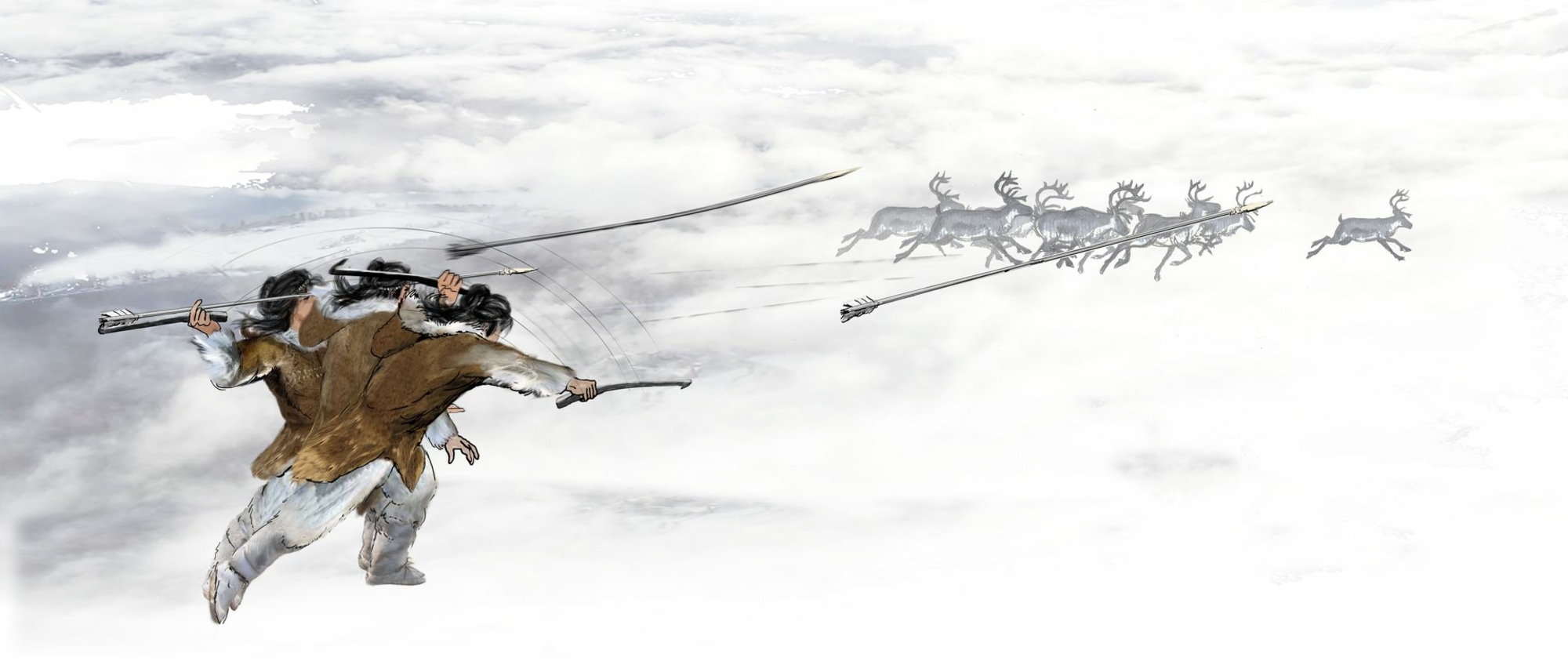
- Home
- Explore the site
- Hunting
- Hunting strategy and tactics
Hunting was the basis of the Magdalenians’ subsistence economy, the source of meat and other items for daily use, such as clothes, blankets and weapons.
Hunting required extensive knowledge of the behaviour of game, its movements and the composition of groups. Magdalenian hunters gathered this information by observing the animals, their social and feeding behaviour and their tracks, among other things. This knowledge, which formed the basis of their hunting strategies, was passed on from generation to generation. In the Paris Basin, the preferred prey were horses and reindeer, the latter often most important at Étiolles.
The excellent level of preservation of fauna in locus 2 shows that hunting took place during late spring and summer, with small groups of hunters. Only a small number of reindeer were targeted on each hunting expedition, and it is probable that only specially selected portions of the animal were returned to the camp. These methods were unique and complementary to others known in the region, such as the mass hunting of reindeer during their autumn migration that supplied the camp at level IV20 at Pincevent.


